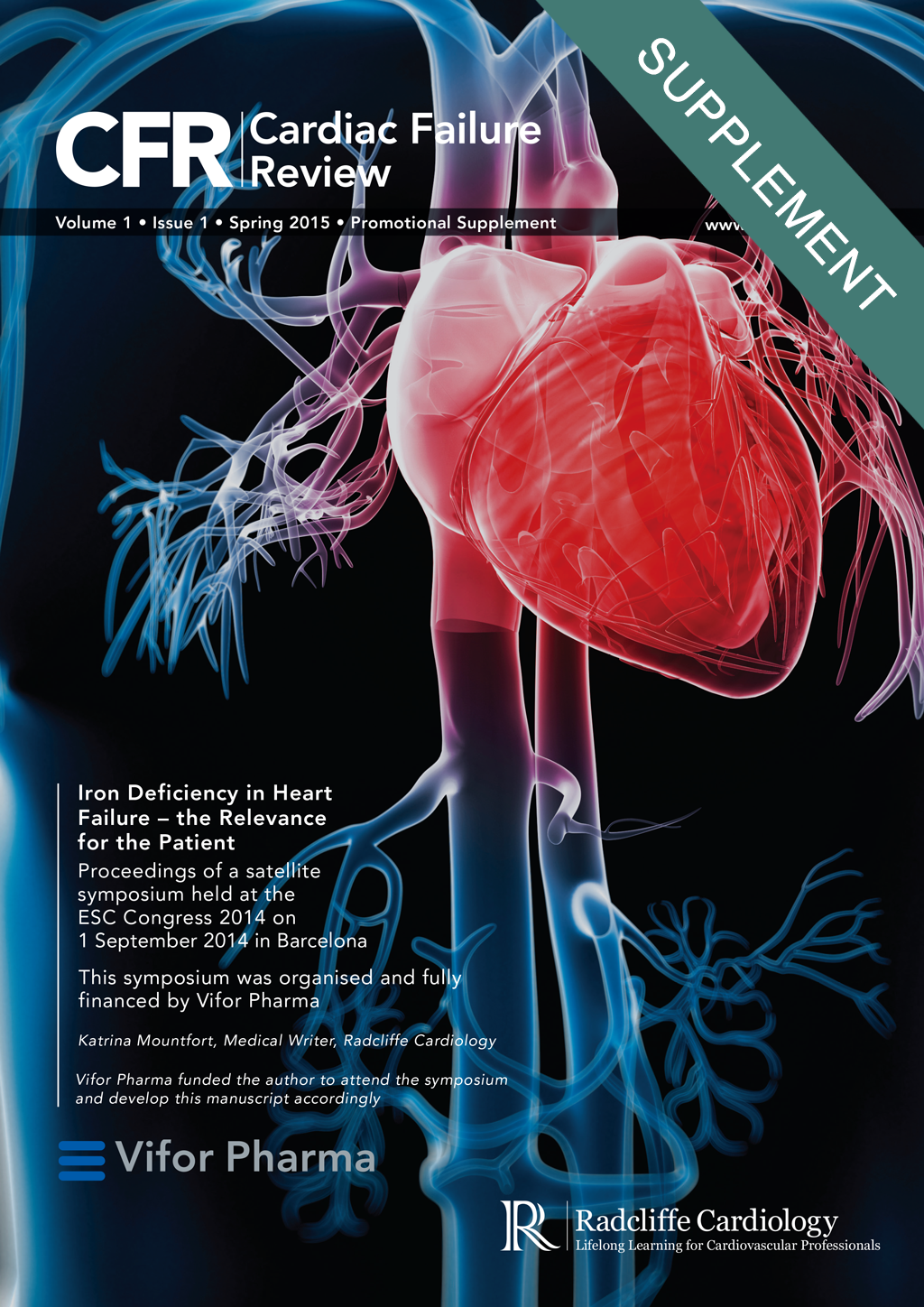Iron Deficiency in Heart Failure – the Relevance for the Patient
This symposium was organised and fully financed by Vifor Pharma
Editorial Process
Radcliffe Cardiology (RC) approached Vifor Pharmaceuticals Ltd (Vifor) to develop a proceedings article summarising presentations from their industry-supported symposium that took place at the European Society of Cardiology Meeting in Barcelona on September 1 2014. Vifor provided funding to RC for a medical writer to attend the sponsored session and develop a manuscript accordingly. This draft was reviewed for scientific accuracy by each of the session chairmen and presenters; and two blinded peer reviewers with suggested amends incorporated. On approval by all reviewing parties, the symposium was submitted to Radcliffe Cardiology and accepted for publication in Cardiac Failure Review (CFR).
A satellite symposium, sponsored by Vifor Pharma and chaired by Josep Comin-Colet, Barcelona, Spain and Stefan Anker, Berlin, Germany was held at the European Society of Cardiology (ESC) congress in Barcelona on the 1st September 2014. Its objectives were to raise awareness on the epidemiology, aetiology and pathophysiology of iron deficiency (ID) in heart failure (HF), to raise awareness of the clinical impact of ID on patient outcomes and quality of life (QoL) in HF; to discuss the latest guidelines for chronic HF in the context of ID; to present data from the Ferric CarboxymaltOse evaluatioN on perFormance in patients with IRon deficiency in coMbination with chronic Heart Failure (CONFIRM-HF) clinical trial; and to share diagnostic and treatment algorithms based on clinical evidence.
Summary and Take Home notes
ID remains under-recognised among cardiologists – an audience survey revealed that a significant minority regularly monitor ID in their HF patients. The take-home messages of the symposium were the following:
- ID is the main cause of anaemia, but also highly prevalent in non-anaemic patients; it is observed in almost 50 % of HF patients in Europe and the prevalence is even higher in Asia.
- ID but not anaemia is associated with:
- reduced exercise capacity
- reduced QoL
- poor outcome
- Treatment with FCM in iron deficient chronic HF patients (FAIR-HF/CONFIRM-HF studies) improves:
- symptoms;
- exercise capacity; and
- QoL.
These results were seen in both anaemic and non-anaemic patients, and the risk of hospitalisation due to worsening HF may be reduced.
- The ESC Guidelines have given a Class I recommendation for ID testing in all HF patients
The link for the webcast of the presentations is now available: http://congress365.escardio.org/Session/14186#.VFukzrFbDIW
The CONFIRM-HF results were also discussed at the Expert on the Spot session and webcast is also available by this link:
http://congress365.escardio.org/Session/14134#.VFulWLFbDIV
Written By : Katrina Mountfort
Reviewers : Carolyn Lam, Piotr Ponikowski, Stefan Anker
Edition : CFR Spring 2015 - Volume 1 Issue 1 Spring 2015
Received : 08 September 2014
Accepted : 13 November 2014
Citation : Cardiac Failure Review 2015;1(1 Suppl 1):1-8.
DOI : https://doi.org/10.15420/cfr.2015.1.1.S1









